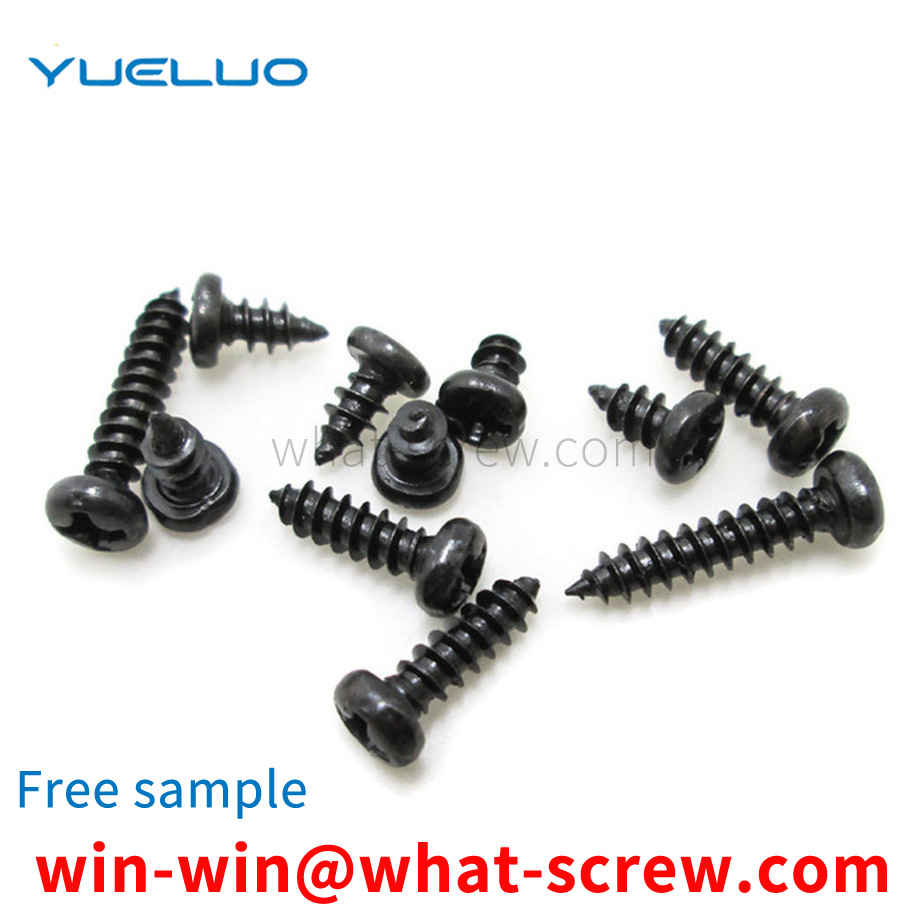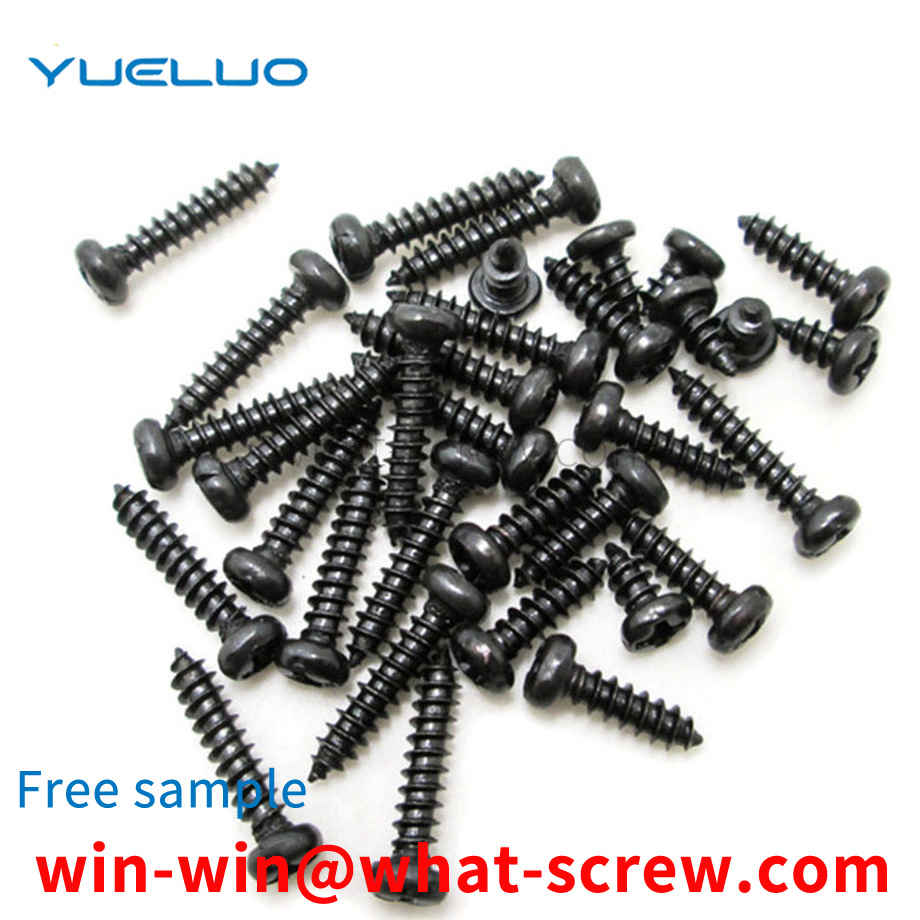As the preferred embodiment of the above-mentioned embodiment, the motor 41 is provided with a thruster 46 that moves the cutting wheel 42 toward the conveying device 3. When the screw needs to be slotted, the thruster 46 generates a thrust toward the screw, and the motor 41 generates a thrust in the direction of the screw. Under the action, the groove is moved along the track 47 toward the screw. The other end of the motor 41 is provided with a bearing 45, and the output end of the motor is provided with a special-shaped wheel 44. The special-shaped wheel 44 is geared to the bearing 45. The wheel 42 is close to or away from the conveying device 3. When the grooving is completed, the special-shaped wheel 44 rotates and drives the bearing 45 to generate the opposite force from the above-mentioned thrust, so that the motor 41 moves back to the initial position along the track 48.
The gasket side of the above-mentioned nut assembly is in contact with the mounting surface. When the nut is tightened, the gasket squeezes the outer cone surface to make it shrink, and the cone tip faces the same direction as the nut, thereby preventing the nut from tightening, so that the nut fixing effect is not good, and at the same time When multiple nuts need to be superimposed and fixed, two adjacent nuts cannot interact with each other, resulting in poor fixing effect.
Bolts are widely used in the machinery industry. Round head bolts are generally fixed in equipment parts, but during long-term use, due to external force or vibration of the equipment itself, the bolts are loosened, and the bolt heads have a long-term use process. A fatal disadvantage is that it is prone to slippage, which can cause major safety hazards and economic losses to users in severe cases.
ANSI B1.1 Thread Pitch Comparison Table Nominal Diameter (inch〖mm〗) Coarse Thread Pitch (UNC) Fine Thread Pitch (UNF) Ultra Fine Thread Pitch (UNEF) Drilling Diameter (Coarse Thread) Drilling Diameter (Fine Thread) #0 0.060 〖1.524〗 80 1.2 # 1 0.073 〖1.5 1.5 # 2 0.086 〖2.8 # 3 0.099 〖2.515〗 48 56 2.0 2.1 # 4 0.112 〖2.4 # 5 0.125 〖 3.175〗 40 44 2.5 2.6 # 6 0.138 〖3.50〗 32 40 2.7 2.9 # 8 0.164 〖4.166〗 32 36 3.4 3.5 # 10 0.190 〖4.0 # 12 0.216 〖5.486〗 24 28 32 4.5 4.6 1/4 6.35 20 28 32 5.1 5.4 5/16 10.7 11.5 9/16 〖14.288〗 12 18 24 12.3 13.1 5/8 〖15.875〗 11 18 24 13.5 14.7 3/4 〖19.05〗 10 16 20 16.7 17.5 7/8 〖22.125 2.4 9 14 〗 8 12 20 22.2 23.4 The pitch is expressed by the number of teeth per inch, such as: 11 teeth per inch, then the pitch=25.4/11=2.309mm. The unit of pitch in the table is the number of threads per inch. The hole diameter is the recommended hole size for tapping, in millimeters.
Material and process requirements The self-tapping locking screw should be made of high-quality carburized steel cold heading, generally no larger than M12. The finished material should be drawn with a high total reduction rate before cold heading, so that the cold heading must be spheroidized. Annealing, in order to enhance the surface hardness and the toughness of the core, most of them are made of medium and low carbon steel. The chemical composition of the material in the standard is only for guidance. The C content is 0.13%~0.37%, the Mn content is 0.64%~1.71%, and the B content can reach 0.005%. The elements of S, P, Mn and Si in the commonly used steel are generally lower than those of the ordinary bolt steel of the same grade. And the surface quality of the material is strictly controlled to reduce deformation resistance and prevent deformation and cracking. Commonly used grades are 20Mn, 15MnB, SWRCH22A, 1022A and medium carbon steel, medium carbon alloy steel SWRCH35K, SCM435, SCR435, etc. Self-tapping locking screws are threads with an arc-shaped triangular cross-section, so the formulation of cold heading and wire rolling processes, as well as the design and manufacture of cold heading dies and special rolling plates are very important. Self-tapping locking screws require a high-hard surface for cutting and extruding capabilities due to the need for self-tapping low carbon steel. At the same time, there must be sufficient core strength and toughness to prevent twisting and breaking during work. The heat treatment process of this type of screw belongs to shallow carburizing. Regardless of whether it is made of low carbon steel or medium carbon or medium carbon alloy steel, its core hardness must be guaranteed to be within the range of 28~38HRC (9.8 grade) 33~39HRC (10.9 grade) and not less than the minimum tensile load of 930MPa (9.8 grade), 1040MPa (grade 10.9), depending on the material, the minimum tempering temperature is 420℃. In order to ensure that the self-tapping locking screw can be smoothly screwed into the prefabricated cylindrical hole, the end of the screw should be hardened by high-frequency quenching to ensure that at least one to three thread teeth are hardened, and the minimum surface hardness is 45HRC.
We have many years of experience in the production and sales of screws, nuts, flat washers, etc. The main products are: handle nuts for instruments, three-point welding bolts, grade 8 blackened high-strength hexagon nuts, stainless steel mushroom head screws and other products, we can provide you with Provide the right fastener solution for you.



















 Service Hotline
Service Hotline




